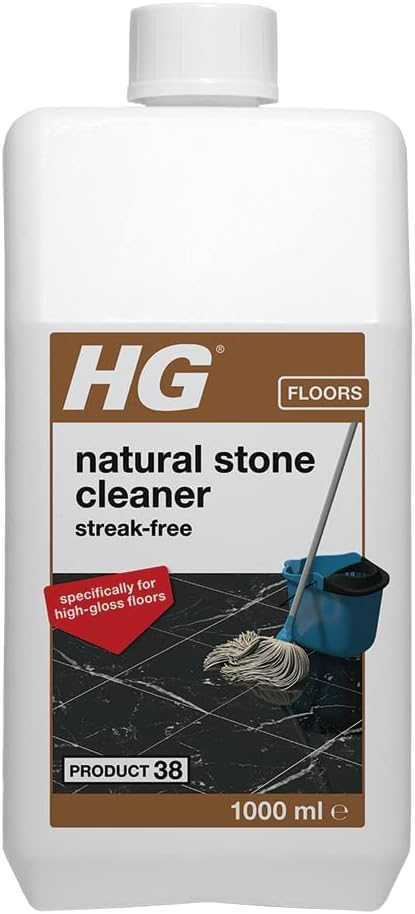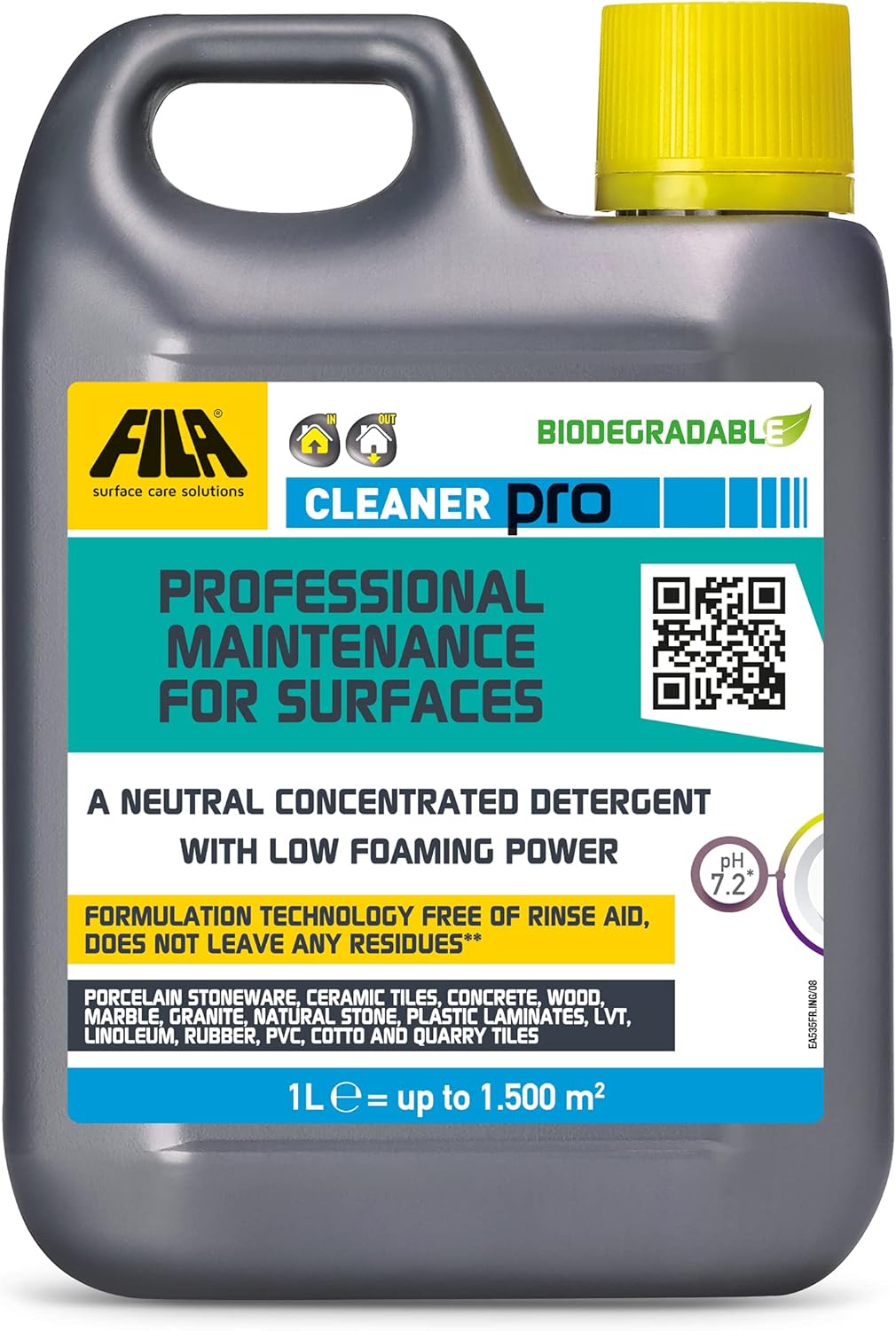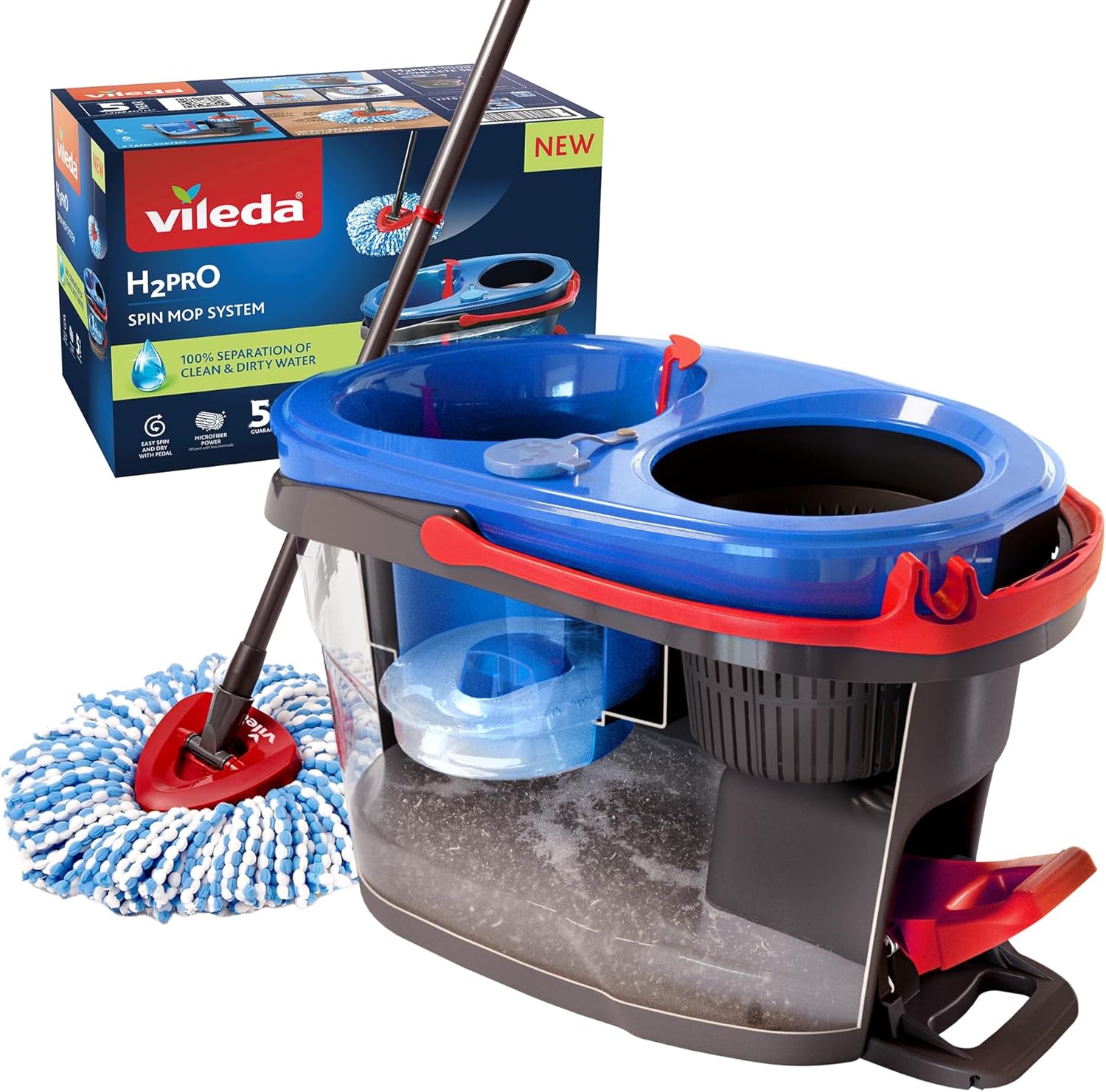Unveiling the Rich Heritage and Artistry of Victorian Tiled Hallways Throughout the United Kingdom
Delving into the Origins and Evolution of Victorian Tiling Techniques
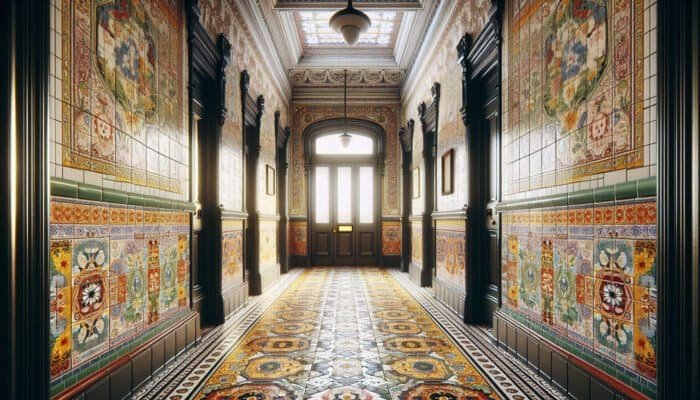
The mid-19th century was a transformative era in British domestic architecture, heralding a surge in Victorian tiled hallway restoration. This period was marked by remarkable artistic innovation and superior craftsmanship that led to the creation of elaborate tile designs which now stand as quintessential elements in British homes. With the advent of advanced production techniques, robust ceramic tiles began to emerge, often adorned with bold patterns and vibrant colours that mesmerised viewers. A significant breakthrough was the invention of the encaustic tile, which allowed colours to be embedded within the tile itself rather than merely applied superficially. This revolutionary method ensured that the designs remained vivid and intact, even amidst the heavy foot traffic typical of bustling hallways.
During the Victorian era, there was a deep-seated desire for individual expression and uniqueness, transforming hallways—often the initial space encountered in a home—into canvases of artistic expression through stunning tile work. The designs were exceptionally diverse, ranging from geometric shapes to intricate floral patterns, each encapsulating the aesthetic sensibilities of the time. As the Industrial Revolution progressed, the increased availability of these tiles empowered middle-class families to embellish their homes with these artistic marvels, cementing the role of Victorian tiled hallway restoration into the very essence of British society.
The Transformation of Tiling Styles Throughout the Victorian Period
The evolution of Victorian tiled hallways exemplifies a dynamic fusion of artistry and innovation that characterised the 19th century. Initially, tile designs were heavily influenced by Gothic Revival aesthetics, featuring pointed arches and elaborate patterns that captivated the public's imagination. As the century advanced, the Arts and Crafts Movement began to leave its mark on tile design, promoting more organic shapes and natural motifs. This transition mirrored a broader cultural movement that sought authenticity and craftsmanship, distancing itself from the mass production ideals that had gained prominence in preceding eras.
As the Victorian era drew to a close, an array of cultural and artistic influences began to infiltrate tile design. The British fascination with diverse cultures, spurred by colonial pursuits, led to the incorporation of Eastern motifs, such as paisleys and intricate arabesques. This blend of styles transformed hallways from mere utilitarian spaces into visual narratives that conveyed the tastes and values of their owners. The rich array of designs found in Victorian tiled hallway restoration exemplifies this transformation, merging traditional craftsmanship with contemporary aesthetic demands.
Understanding the Cultural Importance of Victorian Tiled Hallways in British Heritage
Victorian tiled hallways embody far more than mere decorative features within residences; they encapsulate a significant period of prosperity and progress in British history. During the Victorian era, an elegantly appointed hallway served as a symbol of prestige and wealth. Homes embellished with exquisite tiles communicated messages of refinement and taste, providing an enticing glimpse into the interior spaces that lay beyond. The intricate designs were not only decorative; they reflected the owner's character, aspirations, and social standing.
The cultural significance of these hallways extends beyond their visual allure; they embody a sense of continuity and a connection to the past. The craftsmanship evident in these tiles stands as a testament to the skills of artisans who dedicated their expertise to their creation, preserving techniques that have been passed down through generations. In contemporary terms, restoring these hallways goes beyond simply enhancing property value; it involves honouring a tradition that constitutes an integral part of British architectural heritage. This dedication to restoration speaks volumes about society’s appreciation for history, particularly in the realm of Victorian tiled hallway restoration.
The Enduring Legacy of Victorian Designs on Contemporary Interior Spaces
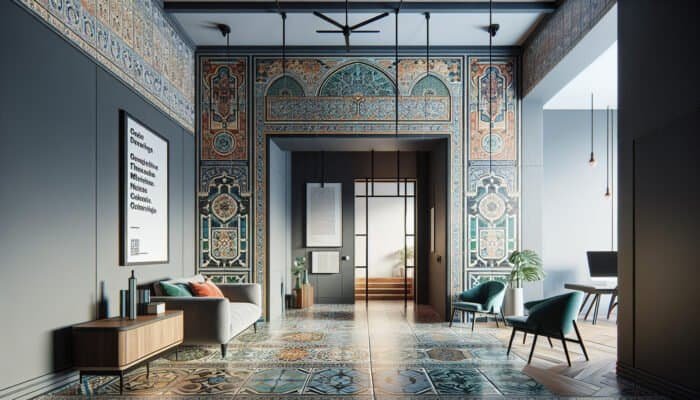
The lasting impact of Victorian tiled hallways continues to profoundly shape modern interior design. Presently, designers frequently draw inspiration from the bold colours, intricate patterns, and historical significance of Victorian tiles, seamlessly integrating them into contemporary settings. The juxtaposition of these vintage tiles against minimalist decor creates a striking visual effect, fostering a dialogue between the past and the present. This aesthetic fusion not only enhances the visual appeal of modern interiors but also responds to an increasing desire for nostalgia within home design.
Moreover, the growing interest in sustainable living has encouraged homeowners to appreciate the durability and longevity of Victorian tiles. Many modern designs incorporate recycled or reclaimed tiles, appealing to environmentally conscious consumers who value both historical significance and the ecological implications of their choices. This trend has revitalised the notion of Victorian tiled hallway restoration, prompting homeowners to embrace the unique character that these tiles offer while promoting sustainable practices in their dwellings.
Commitment to the Restoration and Conservation of Victorian Tiles
Efforts to restore and preserve Victorian tiled hallways are essential in safeguarding the cultural fabric of British architecture. Restoration initiatives not only celebrate the aesthetic significance of these tiles but also foster historical awareness and appreciation. Numerous organisations and local councils actively participate in efforts aimed at protecting and restoring historic buildings, ensuring that future generations can experience the beauty and charm of these Victorian treasures.
The restoration process often entails meticulous research and expert craftsmanship. Skilled artisans work diligently to identify original materials and techniques, ensuring that any repairs or replacements respect the historical integrity of the tiles. This commitment to authenticity is crucial; it preserves the narrative these hallways convey about the past while allowing them to adapt to modern life. The ongoing dedication to restoring Victorian tiled hallways serves as a poignant reminder of the importance of cultural heritage and its role in shaping our communities today.
Reasons Tokyngton Charm is Perfect for Tile Restoration Projects
Located in the heart of North West London, Tokyngton Charm truly lives up to its name with a delightful fusion of period architecture and community spirit. The area’s Victorian and Edwardian homes often feature original tiled hallways, rich in character yet vulnerable to the wear and tear of time. Restoring these architectural attributes not only preserves the area's heritage but also enhances property values, making Tokyngton Charm an ideal locale for expert tile restoration services.
Expert Tip: Essential Products for the Daily Maintenance of Victorian Tile Floors.
Essential Strategies for Effectively Restoring Victorian Tiled Hallways
Implementing Comprehensive Cleaning and Preparation Techniques for Successful Tile Restoration
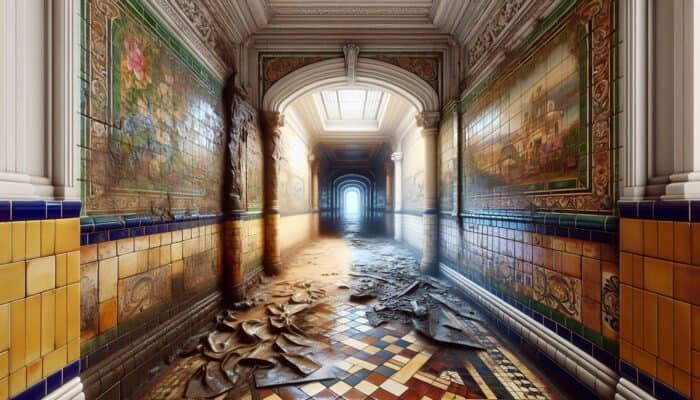
A successful restoration of Victorian tiled hallways commences with a critical initial step: thorough cleaning and detailed preparation. Many of these historic tiles have endured decades—if not centuries—of wear and accumulated grime, making deep cleaning indispensable. By employing suitable cleaning solutions, restorers can effectively remove dirt, grease, and stains without harming the delicate surfaces of the tiles. This step is not merely cosmetic; establishing a clean foundation is essential for assessing each tile's condition and identifying those requiring repair or replacement.
Preparation extends beyond mere cleaning. This phase typically involves inspecting the underlying substrate to ensure it is stable and appropriate for the restoration process. If the substrate is compromised, it can lead to future problems such as cracking or shifting tiles. Therefore, the restoration team may need to reinforce or replace sections of the foundation before addressing the more visible aspects of the restoration. By diligently preparing the area, restorers lay the groundwork for a successful Victorian tiled hallway restoration, ensuring that the final results are both visually stunning and enduring.
Perfecting Repair Techniques for Damaged Victorian Tiles
At the core of any restoration project lies the intricate artistry of repairing damaged tiles. Skilled artisans must balance retaining the original charm of the hallways with the necessity of functional integrity. The first step in this process involves identifying damaged tiles—cracks, chips, or discolouration can drastically detract from the overall aesthetic of the hallway.
Once the damaged tiles have been identified, restorers face the crucial decision of whether to repair or replace them. In many cases, skilled artisans can restore tiles using methods that preserve their original aesthetics. This might involve using specialised adhesives or fillers that closely match the colour and texture of the original tile. When replacements are necessary, locating matching tiles can be quite challenging; however, many artisans have extensive resources at their disposal, including reclaimed tiles and bespoke manufacturing options. The ultimate aim is to ensure that the restored hallway retains its authentic Victorian tiled hallway restoration, serving as a testament to the artistry of the original craftsmen.
Sealing and Protecting Restored Tiles for Maximum Durability
Following the demanding tasks of cleaning, repairing, and replacing tiles, the final step in the restoration process involves sealing and safeguarding the tiles. This stage is vital for ensuring that the beauty and integrity of the tiles endure for many years to come. Applying a high-quality sealant acts as a protective barrier against moisture, dirt, and stains, significantly extending the lifespan of the tiles while preserving their aesthetic charm.
When selecting a sealant, it is crucial to choose products that are compatible with the specific type of tile being restored. Some tiles may require breathable sealants to avoid moisture accumulation, while others may benefit from a more robust protective layer. This careful selection process underscores the importance of expertise in restoring Victorian tiled hallways. Proper sealing not only protects the tiles but also enhances their colour, allowing the intricate designs to radiate vibrantly.
In addition to sealing, ongoing care and maintenance should be integral to any restoration strategy. Homeowners must be educated about the best practices for cleaning and maintaining their restored hallways to ensure they continue to be a source of pride and beauty in the home. Investing in the proper care of these historic tiles not only preserves their allure but also reflects a commitment to restoring and valuing British architectural heritage.
Choosing the Right Experts for Victorian Tiled Hallway Restoration Across the UK
Assessing the Qualifications and Expertise of Restoration Specialists
Choosing the right professionals for your Victorian tiled hallway restoration is crucial for achieving the desired results. The restoration process is complex and requires a profound understanding of historical craftsmanship, alongside knowledge of modern materials and techniques. When assessing potential restoration specialists, it’s imperative to consider their qualifications and experience specifically related to Victorian tiles. Seek professionals who have undergone training in historical preservation or possess hands-on experience working with vintage materials.
The demand for skilled artisans in this specialised domain can be considerable, making it essential to seek out specialists with a proven track record. Their ability to navigate the intricacies of tile restoration—ranging from cleaning techniques to tile replacement—can significantly influence the quality of the end result. A team that understands the nuances of Victorian tiled hallway restoration will not only restore the aesthetic appeal of the tiles but also ensure their functionality and durability within your home.
Conducting a Thorough Portfolio Review of Restoration Professionals
Before making a commitment to a restoration expert, it is wise to conduct a comprehensive review of their portfolio. This step provides valuable insights into the quality of their craftsmanship and can help gauge their style and methodology regarding restoration. Look for examples of prior projects that highlight their ability to work with Victorian tiles, particularly those that showcase meticulous attention to detail and a commitment to preserving historical integrity.
A well-rounded portfolio should present a variety of projects, spanning from residential to commercial restorations, effectively demonstrating the restoration team’s versatility and expertise. Additionally, testimonials from past clients can offer valuable insights into their experiences. When a professional has successfully revitalised a range of Victorian tiled hallways, you can feel more confident in their expertise in Victorian tiled hallway restoration. The right expert will recognise the delicate balance between restoration and preservation, ensuring that the outcome aligns with your expectations.
Seeking Local Recommendations for Trustworthy Restoration Experts
One of the most effective methods to find reliable restoration professionals is to seek local recommendations. Engaging with neighbours or local historical societies can illuminate a wealth of information about reputable artisans in your area. These community connections often guide you to specialists who have built a solid reputation based on their prior work.
Local historical societies frequently maintain records of past restoration projects and can provide insights into experts who have successfully handled projects similar to your own. Moreover, visiting restored properties within your community can serve as inspiration, allowing you the opportunity to connect with homeowners who have undergone similar restoration journeys. These recommendations significantly enhance your search for the right team to undertake your Victorian tiled hallway restoration project, ensuring that your restoration efforts are in capable hands.
Transforming Your Home Through the Restoration of Victorian Tiles
Enhancing Aesthetic Appeal Through Considerate Restoration Practices
Restoring Victorian tiles can dramatically elevate the aesthetic allure of your home. The intricate designs and vivid colours that characterise these tiles serve as captivating focal points, infusing hallways with elegance and sophistication. Each tile tells a unique story, inviting visitors to admire the artistry that went into its creation. The visual impact of a well-restored hallway should not be underestimated; it sets the tone for the entire home, evoking feelings of warmth and charm.
Victorian tiles provide a unique opportunity to harmonise historical significance with contemporary style. In modern interiors, these tiles can be juxtaposed against minimalist décor, creating a striking contrast that celebrates both heritage and innovation. This harmonious blend not only enhances visual appeal but also fosters an inviting atmosphere, ensuring that your hallway stands out as a hallmark of style and character. Investing in the restoration of a Victorian tiled hallway transcends mere aesthetics; it’s about crafting a space that reflects your personality and values.
Significantly Boosting Property Value Through Restoration Initiatives
Beyond their artistic allure, restored Victorian tiled hallways can substantially enhance your property’s value. In a competitive housing market, distinctive features like original tiled hallways can set your home apart, attracting potential buyers who appreciate the charm and history embodied by these tiles. The restoration process not only preserves the tiles’ beauty but also showcases the quality of craftsmanship, a key factor in determining value for discerning buyers.
Historical features often command a premium in the property market, appealing to buyers with a keen interest in architecture and heritage. As more individuals seek homes with character and unique stories, investing in the restoration of Victorian tiles becomes a wise financial decision. A beautifully restored hallway can add both aesthetic and monetary value to your property, making it a worthy investment in the long run. The allure of Victorian tiled hallway restoration can thus play a pivotal role in enhancing your home’s marketability.
Finding Personal Satisfaction Through the Restoration Process
There’s an undeniable joy associated with restoring a piece of British history to its former glory. Engaging in the process of restoring a Victorian tiled hallway allows homeowners to forge a deeper connection with their property, creating a sense of pride in preserving a unique aspect of their home. The satisfaction derived from witnessing the transformation of the tiles from worn and faded to vibrant and stunning is truly immeasurable.
Beyond aesthetics, this journey often involves learning about the tiles’ history, the craftsmanship involved, and the narratives they convey. This educational aspect can enrich your experience, infusing your home with a profound narrative and connection to the past. As the restored hallway becomes a focal point of daily life, you’ll find yourself savouring the beauty and history it embodies, creating a space filled with personal significance and character.
Highlighting the Durability and Longevity of Restored Victorian Tiles
One of the most compelling reasons to invest in restoring Victorian tiles is their exceptional durability. Originally designed to withstand the rigours of daily life, properly restored tiles can provide a long-lasting flooring solution. Unlike modern materials that may deteriorate quickly, well-maintained Victorian tiles can endure for generations, making them an excellent investment for homeowners seeking sustainability.
Restored Victorian tiles not only retain their beauty but also withstand the wear and tear associated with everyday use. The robust materials used in their construction ensure they can handle foot traffic while maintaining their aesthetic appeal. Furthermore, regular maintenance practices—such as gentle cleaning and periodic inspections—can further extend their lifespan. Investing in the restoration of a Victorian tiled hallway signifies a commitment to quality and longevity, offering both beauty and practicality.
Examining Successful Case Studies of Victorian Tile Restorations in the UK
Showcasing a Residential Renovation Project in London
In the heart of London, a charming Victorian townhouse underwent a breathtaking renovation that showcased its original tiled hallway. Hidden beneath layers of modern flooring, the tiles were rediscovered, revealing a stunning mosaic pattern that had been concealed for decades. Thanks to the expertise of skilled restorers, this hallway was meticulously cleaned, repaired, and sealed, restoring its glorious charm.
The transformation was nothing short of remarkable. With the restored tiles now serving as the focal point of the entryway, the entire home gained a refreshed essence. Visitors are often captivated by the intricate designs and vibrant colours that greet them as they step through the front door, creating a striking first impression. This project exemplifies how Victorian tiled hallway restoration can beautifully merge the old with the new, producing a home that is both inviting and stylish.
Restoration of a Historic Building in Manchester
A historic building in Manchester, once a vibrant social hub, was in desperate need of restoration. Its original tiled hallway, full of character yet suffering from years of neglect, required dedicated efforts to restore its vibrancy. Skilled restorers carefully removed damaged tiles, painstakingly sourced replacements, and revitalised the hallway’s original splendour.
The completed project not only preserved the building’s historical integrity but also enhanced its appeal as a venue. The restored hallway now attracts visitors who appreciate its aesthetic beauty and the rich story it tells about Manchester’s architectural heritage. This successful restoration stands as a testament to the significance of Victorian tiled hallway restoration, demonstrating how dedicated efforts can breathe new life into historical spaces.
Revitalisation of a Grand Country House in Yorkshire
Nestled in the picturesque Yorkshire countryside, a grand country house longed for a revival. The entrance, boasting stunning Victorian tiles, had fallen into disrepair, obscuring the home’s inherent charm. The owners embarked on a restoration journey, seeking the expertise of professionals to restore the magnificent hallway tiles to their former glory.
After careful cleaning and restoration, the tiles once again shimmered with their original colours and intricate designs. The revitalised hallway served as a warm invitation to guests, perfectly complementing the home’s rustic elegance. This project exemplifies the transformative power of Victorian tiled hallway restoration, demonstrating how a commitment to preserving history can result in a more beautiful and welcoming space.
Successful Restoration of a Commercial Building in Edinburgh
An elegant commercial building in Edinburgh, once a thriving shop, faced the challenge of modernisation while preserving its historical charm. The entrance, adorned with original Edwardian tiles, required careful restoration to maintain its aesthetic appeal. The restoration team meticulously cleaned the tiles, repairing any damage and reinforcing the underlying structure to ensure its stability.
The completed project not only enhanced the building’s exterior but also attracted increased foot traffic; the charming entrance drew in passersby. This building now serves as a prime example of how Victorian tiled hallway restoration can elevate commercial spaces, seamlessly marrying historical elegance with modern functionality.
Maintaining the Beauty of Your Restored Victorian Tiled Hallway
Implementing Regular Cleaning Practices for Enduring Appeal
Maintaining the beauty of your restored Victorian tiled hallway relies heavily on the implementation of regular cleaning practices. While these tiles are durable, they are not immune to the accumulation of dirt and dust over time. Employing gentle cleaning methods is essential to ensure that the tiles continue to shine without risking damage. Homeowners should opt for pH-neutral cleaners, which effectively remove grime without stripping the tiles of their protective seal.
In addition to selecting appropriate cleaning solutions, employing soft cloths or mops can help prevent scratches and preserve the intricate designs of the tiles. Regular sweeping or vacuuming should also be integrated into your maintenance routine to keep loose dirt and debris at bay. By committing to these cleaning practices, you can maintain the luster and appeal of your Victorian tiled hallway restoration, ensuring that it remains a stunning feature of your home.
Strategies for Shielding Your Tiles from Damage
Preventing damage to your restored Victorian tiled hallway is crucial for maintaining its beauty and longevity. Simple protective measures can significantly impact safeguarding the tiles against wear and tear. Installing mats at entry points can help trap dirt and moisture, preventing it from reaching the tiles and causing potential harm.
Moreover, careful furniture placement is essential. Avoid dragging heavy objects across the tiled surface, as this can lead to scratches and chips. If you must move furniture, consider using protective pads or coasters to distribute the weight evenly. Regularly assessing the condition of the tiles and adjusting your lifestyle accordingly can help ensure that the Victorian tiled hallway restoration endures for many years to come.
Scheduling Regular Professional Inspections to Maintain Longevity
Scheduling periodic professional inspections is another critical component in maintaining your restored Victorian tiled hallway. Even with diligent care, hidden issues can arise over time. Professional restorers possess the expertise to identify potential problems before they escalate, ensuring that your hallway remains in optimal condition.
These inspections often encompass a thorough examination of the tiles, grout, and surrounding areas. Professionals can provide assessments of the sealant’s longevity and recommend reapplication when necessary. Engaging with restoration experts for periodic inspections not only safeguards your investment but also reinforces your commitment to preserving the charm of your Victorian tiled hallway restoration.
Commonly Asked Questions Regarding Victorian Tiled Hallways
What are the defining characteristics of a Victorian tiled hallway?
A Victorian tiled hallway is characterised by decorative ceramic tiles, often featuring intricate patterns and vibrant colours that epitomise the Victorian era. These tiles serve as a prominent architectural feature in numerous British homes.
What compelling reasons exist for restoring my Victorian tiles?
Restoring Victorian tiles significantly enhances their aesthetic appeal, preserves historical value, and can notably increase property value. Furthermore, it provides personal satisfaction by reviving a piece of history.
How should I go about selecting a restoration expert?
Select a restoration expert with proven experience in historical preservation, a solid portfolio of previous projects, and positive local recommendations to ensure quality work on your Victorian tiled hallway.
What standard restoration techniques are commonly employed for Victorian tiles?
Standard restoration techniques include deep cleaning, repairing or replacing damaged tiles, and applying protective sealants to enhance both durability and aesthetics.
How can I effectively maintain my restored Victorian tiled hallway?
Regularly clean the tiles using pH-neutral cleaners, utilise mats to prevent dirt accumulation, and schedule periodic professional inspections to ensure they remain in excellent condition.
What materials are typically used in the creation of Victorian tiles?
Victorian tiles are generally made from ceramic, often featuring encaustic designs where the colours are embedded into the tile rather than painted on, ensuring lasting vibrancy.
Is it feasible to replace only a few tiles in my hallway?
Yes, it is feasible to replace just a few damaged tiles, but it’s crucial to find matching tiles or reproduce the original designs to maintain the cohesive look of the hallway.
What practices should I avoid during the restoration of Victorian tiles?
Avoid using harsh chemicals or abrasive cleaning tools that could damage the tiles. Additionally, refrain from making significant alterations that could compromise the historical integrity of the tiles.
How long does the typical restoration process usually take?
The duration of a restoration process can vary widely based on the extent of the required work. Minor repairs may take a few days, while more extensive restorations can require several weeks.
Are restored Victorian tiles suitable for modern homes?
Absolutely! Restored Victorian tiles can beautifully complement modern aesthetics, offering a stylish contrast that harmoniously blends historical charm with contemporary design.
The Article Pro Victorian Tiled Hallway Restoration In Tokyngton Charm first found on https://london-stone.co.uk
The Article Victorian Tiled Hallway Restoration in Tokyngton Charm appeared first on https://fabritec.org
The Article Victorian Tiled Hallway Restoration in Tokyngton Was Found On https://limitsofstrategy.com
The Article Victorian Tiled Hallway Restoration Services in Tokyngton found first on https://electroquench.com
